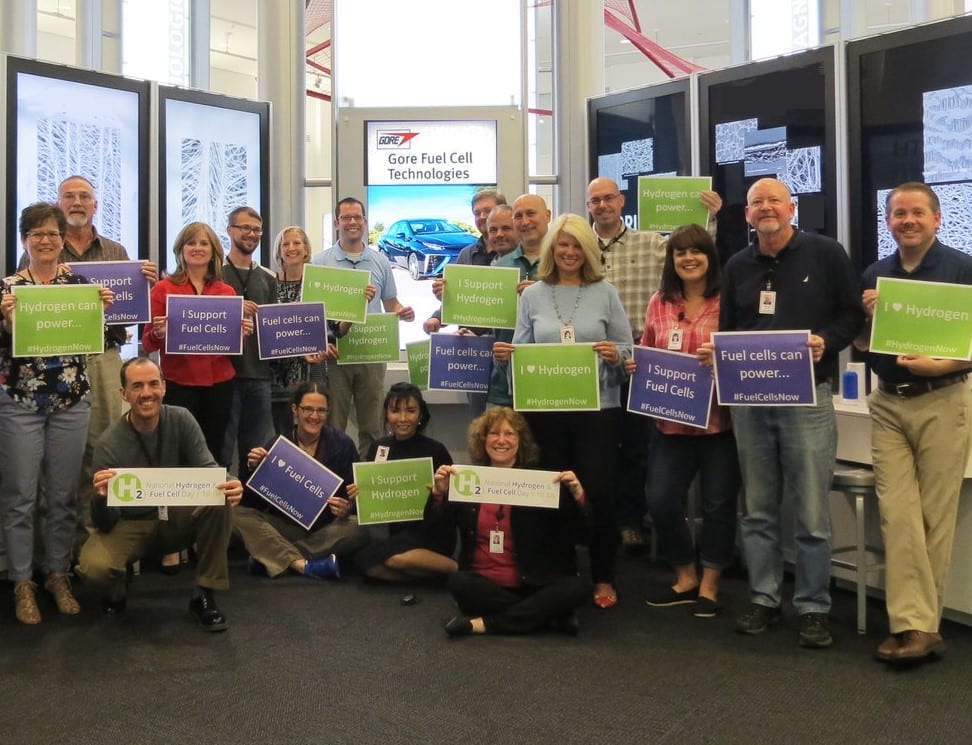As Americans, we have always sought new and innovative ways to move from one place to another. Our fascination with mobility has spurred us into new territories – land, sea, air and beyond, but it comes at a cost. According to the U.S. Environmental Protection Agency (EPA), the transportation sector currently makes up 28% of all greenhouse gas emissions in the United States. As the country continues to explore various options for reducing carbon and other pollutants from its transportation needs, zero-emission hydrogen-powered fuel cell vehicles (FCVs) are increasingly being adopted to move people and products around the world by powering forklifts, cars, buses, trucks, trains, boats and everything in between.
The case for FCVs is strong and multifaceted. Fuel cells are durable, efficient, reliable and most importantly, scalable, so they can be sized to any vehicle class or power need. Hydrogen can be sourced from a variety of feedstocks, including domestically-produced natural gas, or renewable fuels such as biogas. Hydrogen can also be produced from water, via traditional, solar or wind-powered electrolysis.
Support National Hydrogen and Fuel Cell Day on October 8th (10/08), the date is in honor of hydrogen’s atomic weight (1.008)
All the recent progress and limitless potential of hydrogen has led the industry and its supporters to designate October 8th (10/08), in honor of its atomic weight (1.008), as National Hydrogen and Fuel Cell Day. 2018 marks the fourth year that Congress has officially recognized this day with a Senate resolution, and there will be a range of activities around the country to celebrate the important benefits that fuel cells and hydrogen provide, especially in the transportation sector.
Hydrogen and FCV Demand in Light-Duty Sector
On the light-duty side, there is growing demand for high-efficiency and innovative technology features when purchasing new vehicles, but many consumers don’t want to sacrifice performance or modify their driving habits. FCVs are an ideal solution, as they offer 300 to 400 miles of driving range per tank of hydrogen fuel, refuel in less than five minutes, can be scaled from a mid-range sedan to an SUV, contain the latest high-tech amenities, and operate quietly with highly responsive performance. Zero-emissions with zero compromise.
Toyota, Honda, and Hyundai currently sell or lease FCVs in California, with nearly 5,200 already in the hands of drivers on the roads there, fueled by 35 hydrogen stations across the Golden State, with another 30 stations in development. These automakers are poised to soon expand into the Northeast, supported by an initial network of hydrogen stations located between the New York City and Boston metro areas.
The next few years will see tremendous growth in the passenger vehicle space, with recent announcements from a variety of automakers that they will either be ramping up or expanding their FCV offerings. Earlier this summer, Audi and Hyundai announced a multi-year cross-licensing agreement on fuel cell vehicles. Toyota stated in May that it is expanding its FCV production capacities through 2020 and expects to sell more than 30,000 globally each year. Hyundai will soon be introducing its second generation FCV model in the U.S. Honda and General Motors are building a joint fuel cell manufacturing facility in Michigan to mass-produce hydrogen fuel cell systems starting around 2020. Both Kia and BMW have also confirmed plans to market FCVs in 2020 and 2021 respectively.
Fuel Cell Growth in MD and HD Markets
Beyond the light-duty sector, fuel cells are powering products for a range of other transportation markets.
Zero-emission hydrogen-powered fuel cell vehicles (FCVs) are increasingly being adopted to move people and products around the world by powering forklifts, cars, buses, trucks, trains, boats and everything in between.
More than 22,000 fuel cell forklifts are operating 24/7 across the United States in warehouses, distribution centers, and cold-storage facilities. This sector is seeing huge growth with investments by companies such as Walmart and Amazon for their ability to replace battery-powered systems and increasing productivity while saving customers time, space, and money.
The medium and heavy-duty vehicle markets are also starting to gain traction. There are dozens of fuel cell buses currently or soon-to-be operating in at least seven states across the country. Both FedEx and UPS are beginning to integrate fuel cell-powered delivery trucks into service routes in California and New York. Fuel cell-powered heavy-duty Class 8 trucks are starting to prove their worth at the country’s busiest ports, leading to several major announcements of large orders and new models coming down the pike. Most recently, the Port of Los Angeles announced a program to demonstrate ten fuel cell-powered trucks, as well as to deploy two new hydrogen fueling stations to support them.
So, on October 8th we will celebrate National Hydrogen and Fuel Cell Day, but rather than rest on the laurels of how far we have come, we are inspired to drive even further to see just how far we can go.
For more information on National Hydrogen and Fuel Cell Day, visit us online at www.hydrogenandfuelcellday.org.


